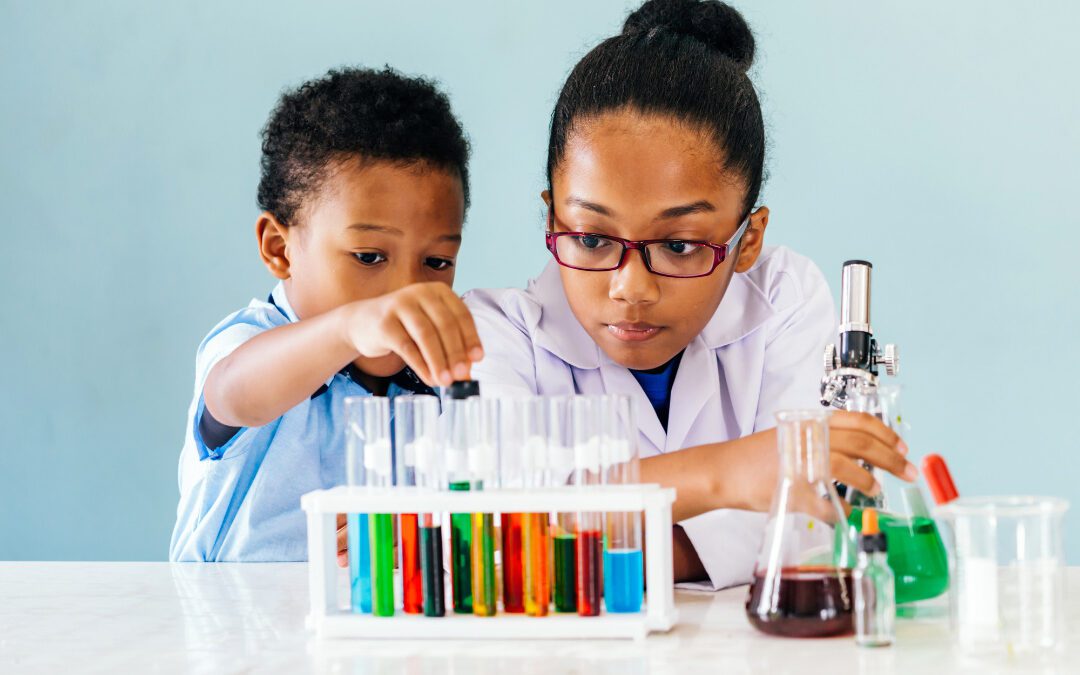While February may be associated with hearts, chocolates, and roses, it is also a time to celebrate Black history, all month long. Black Americans have long contributed to the shared cultural heritage of the United States and beyond, and have been instrumental in moving the sciences forward despite racial and gender barriers, or receiving belated recognition for their important roles (stay tuned for next month’s Women’s History Month blog post, honoring Katherine Johnson and other women in STEM).
Read on to learn more about just a few of the seminal Black innovators who have made advances in science, technology, and engineering.
George Washington Carver, Inventor and Agricultural Scientist
No list of Black innovators would be complete without Carver, who despite having been born an enslaved person, went on to earn a master’s degree in scientific agriculture, becoming the only African American in the US with an advanced degree in the subject. Because of his expertise, he later headed up the Tuskegee Normal and Industrial Institute’s Agricultural Experiment Station, where his focus was on improving the lives of farmers in southeastern Alabama, teaching them about crop rotation and fertilization, and popularizing “undesirable crops,” the now ubiquitous sweet potato and peanut.1 A US national monument dedicated to Carver was the first to honor a non-president and a Black American.
Percy Julian, Chemist
A holder of more than 100 patents, Percy Lavon Julian earned his PhD in organic chemistry in 1931. After a brief stint in academia, Julian worked for Glidden, a paint company, where he researched and developed soy-based products, such as a flame retardant used by the US Navy in World War II, as well as a synthesized progesterone for preventing miscarriages, and synthetic cortisone for treatment of rheumatoid arthritis.2 He began his own lab in the 1950s, expanding into Mexico after discovering wild yams from the country were even more effective than soy for several of his products.
Marie M. Daly, Biochemist
Marie M. Daly, a graduate of Columbia University and the first Black American woman to earn a PhD in chemistry, was a researcher and educator whose focus was on nutritional science, particularly how components of food and diet, including cholesterol and sugar, affect cardiovascular health. After teaching at Columbia, she joined the Albert Einstein College of Medicine as a professor from 1960 until she retired in 1986.3 Two years later, she honored her father with a scholarship fund in his name, established at Queens College for African American students studying science.
Mark Dean, Electrical Engineer
A holder of more than 40 patents, including three of IBM’s original nine patents for PCs, Mark Dean, an inventor and engineer, is credited with the co-invention of a bus control system that enables the use of peripheral devices on computers.4 After a long and successful career at IBM, Dean became a professor at the University of Tennessee in Knoxville.
Frank Greene, Electrical Engineer
A pioneer in semiconductors, Frank Greene joined Fairchild Semiconductor’s R&D Labs, where he worked as a memory chip designer, developing the technology and holding the patent for Fairchild’s innovative integrated circuit. After breaking Silicon Valley’s color barrier in the 1960s and his success at Fairchild, Greene founded NewVista Capital in the 1980s, where he invested in startups by women as well as people from communities of color.5 In addition to his success in industry, he is remembered for his ethos of helping others, having launched the GO-Positive Foundation to mentor students and young professionals.
Paula Hammond, Chemical Engineer, Nanotechnology
As a high school student, nanotechnology pioneer Paula Hammond became fascinated by the opportunity to transform elements through chemistry, creating brand-new things.
After earning her PhD from MIT in 1993, she went on to cofound the Institute for Soldier Nanotechnology at MIT, where her lab invented a blood-clotting spray coating with the potential to save combat troops’ lives. At MIT, where Hammond is a professor, she has also created polymers for targeted drug delivery in cancer patients, among many other innovations, for which she holds over 20 patents.
Mae Jemison, Physician and NASA Astronaut
Astronaut Mae Jemison was interested in science from a young age (for more on Jemison’s life and resources for kids to learn more, check out our summer reading blog post), and dreamed of traveling to space one day, but she began her career as a physician, and helping refugees in the Peace Corps. After graduating from Cornell with her MD, she practiced medicine before applying to NASA’s astronaut program.7 She was selected, and trained for her first mission aboard Endeavor, making her the first Black woman to travel in space. After her career with NASA, she served as faculty at Dartmouth and Cornell before forming a nonprofit.
Welton Taylor, Bacteriologist
Scientist and civil rights activist Welton Taylor studied bacteriology and earned a bachelor degree before joining the war effort in the 1940s. After his deployment, he continued his education in the field, earning his PhD. As a faculty member at College of Medicine at the University of Illinois, he discovered that tetanus and gangrene could be treated with commonly available antibiotics. His later work solved a salmonella outbreak in baby food, and his standardized approach was adopted in labs around the world.8 He received many honors during his lifetime, including the Congressional Gold Medal and induction to the National Inventors’ Hall of Fame.
Warren Washington, Atmospheric Scientist and Climate Researcher
Distinguished client scientist Warren Washington, along with a colleague at the National Center for Atmospheric Research (NCAR), is responsible for developing computer models of the atmosphere, which were created in the 1960s and are still used by scientists to help understand climate change.9 He was the second African American to earn a PhD in atmospheric sciences. As a pioneer and longtime researcher with NCAR who headed up the Climate Change Research Section, he was honored in 2010 with the National Medal of Science.
STEM Innovators of the Future
Reflecting on the scientists of the past, as well as those who are working diligently to shape our future today, inspires us to think ahead to what our children might contribute to the world. At STEMful, the skills your child builds with STEAM- and STEM-based learning today—critical thinking, collaboration, creativity—will help them to become the innovators of tomorrow. Sign up your child for one of our programs, suited to kids ages 1.5 to 10, to sprout their curiosity and watch it flourish.
-
“George Washington Carver,” Science History Institute Museum and Library, accessed January 24, 2024, https://www.sciencehistory.org/education/scientific-biographies/george-washington-carver/.
- “Percy L. Julian,” DePauw University, accessed January 24, 2024, https://www.depauw.edu/julian/biography/.
- “Marie Maynard Daly,” Science History Institute Museum and Library, accessed January 24, 2024, https://www.sciencehistory.org/education/scientific-biographies/marie-maynard-daly/.
- “Mark Dean,” National Inventors Hall of Fame, accessed January 24, 2024,
https://www.invent.org/inductees/mark-dean. - “Celebrating Black History Month: Spotlight on Frank S. Greene, Ph.D. ’70 (1938-2009),” February 9, 2016, Santa Clara University School of Engineering, https://www.scu.edu/engineering/stories/celebrating-black-history-month-spotlight-on-frank-s-greene-phd-70-1938-2009.html.
- “Paula Hammond,” Science History Institute Museum and Library, accessed January 24, 2024, https://www.sciencehistory.org/education/scientific-biographies/paula-hammond/.
- Kerri Lee Alexander, “Mae Jemison,” National Women’s History Museum, accessed January 24, 2024, https://www.womenshistory.org/education-resources/biographies/mae-jemison.
- “Welton Ivan Taylor,” History Makers, accessed January 24, 2024, https://www.thehistorymakers.org/biography/welton-ivan-taylor-39.
- “A Short Biography of Warren M. Washington: NCAR Climate Scientist,” NCAR, accessed January 24, 2024, https://www.archives.ucar.edu/exhibits/washington/bio.











